Over the last two weeks I have been sharing examples of Feeling Edges and Abstracting Shapes from my 2018 travel sketchbooks. These are two of the three ways of visual thinking which I explain in detail in SketchingNow Foundations. Today, we will look at the third way – Constructing Volumes.
Constructing volumes is all about seeing through objects and working in a structured way (that starts with the volumes of the objects) and using invisible guidelines to help the parts align. It often includes using pencil construction lines and perspective setups, but it doesn’t have to. Nor does it have to be done with an obsession for accuracy although it generally results in less wonky sketches than you often get when you work edge by edge (using the feeling edges approach).
I knew that I would find less examples of Constructing Volumes than edges and shapes but it is a bit of a shock how rarely I use this approach (in a traditional sense) these days. Apart from my teaching related sketching, I only drew with volumes once in my 11 weeks Europe. Keep reading to find out when that was.
The lack of specific ‘volume sketching’ is because I am becoming increasing confident with my sketches and so are able to think about volumes without having to actually sketch them.
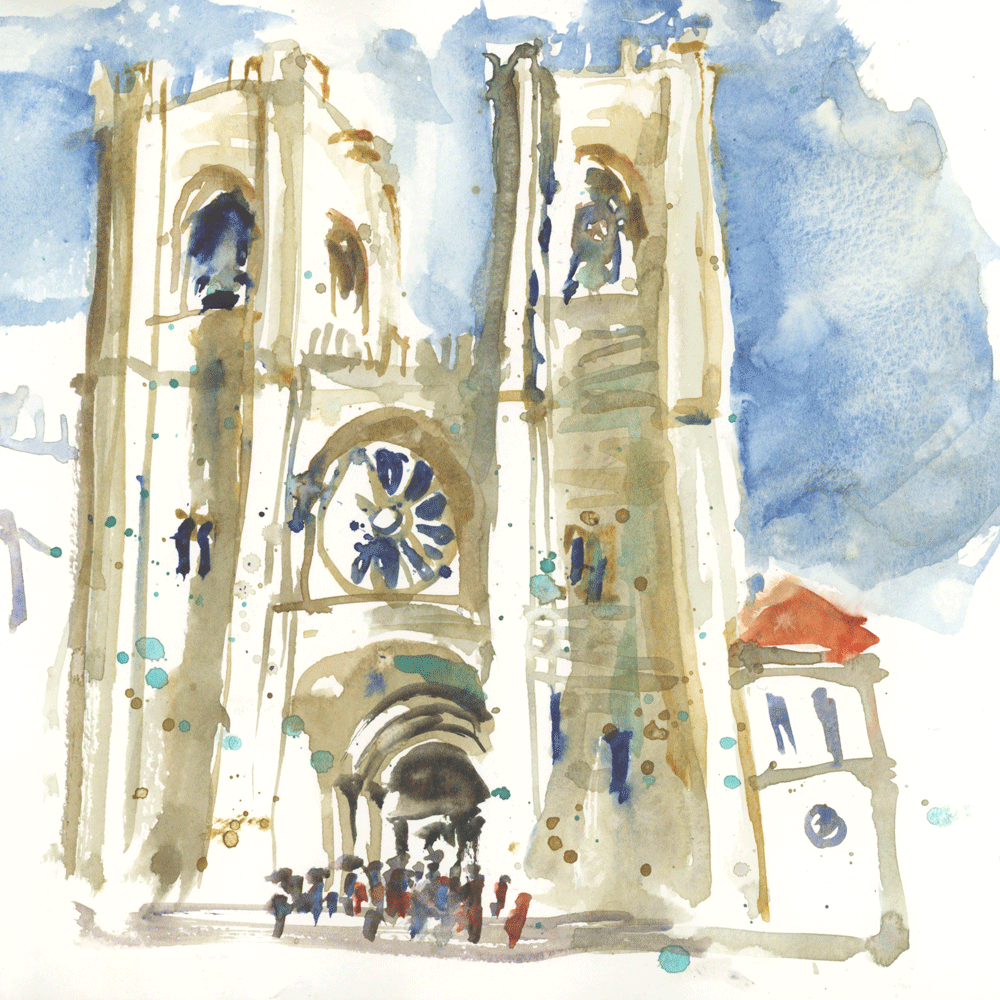
This is particularly the case when it comes to sketching architecture. I feel the volumes but then simply paint with shapes. This sketch of the Se Cathedral in Lisbon is a good example – I was thinking about the volumes and can mentally feel them, but then I switched to seeing shapes and this is what I put down on the page. Without a good sense of volumes and how they sit in space, it is easy for shape-based painting to look flat.
So here are three examples:
- The one time I used volumes (and pencil guidelines) during my Europe 18 trip
- An example of when I wished I had constructed volumes from my CA18 trip
- And why Chicago was a tough city for me to draw in (from 2017’s symposium).
1. Constructing volumes in Porto
The only time I used pencil guidelines and a more traditional approach to constructing volumes was… drum roll please…
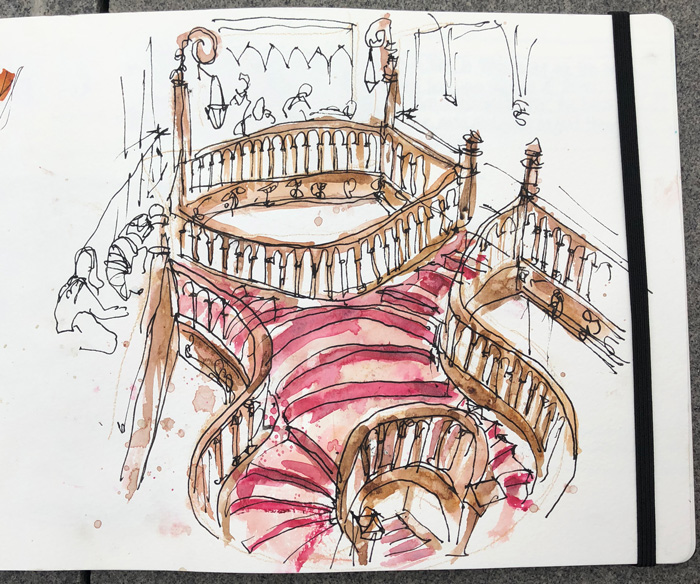
for this crazy staircase. I needed to get the overall volumes done first (with watercolour pencil) and then work out where the main flights were before coming in and drawing the individual steps and the balustrades.

This is another version when I used painted guidelines instead of pencil.
BTW here is a link to the report of my Porto Symposium workshop (with PDF handout) which was all about drawing a Baroque facade using constructing volumes.
2. Where I wish I had constructed volumes
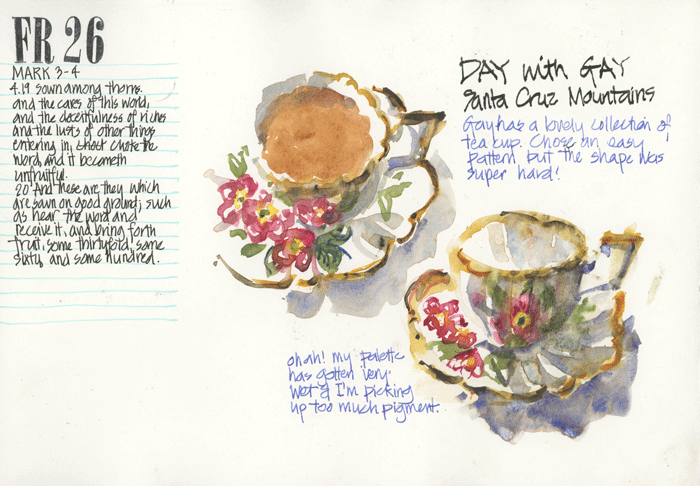
Sketching this teacup with direct watercolour while chatting and eating a treat at the same time was super hard. I do this often with my teacup sketches, so what was different on this occasion?
A varied scalloped edge as this cup and saucer have, is very hard to sketch quickly without having a guideline for the overall circle.
Note: If you are enrolled in Foundations check out bonus video for Lesson 4 for more.
3. Why Chicago is hard to sketch quickly.

The early skyscrapers of Chicago were hard for me to sketch quickly as they have lots of fine detail and rows of clearly defined windows.
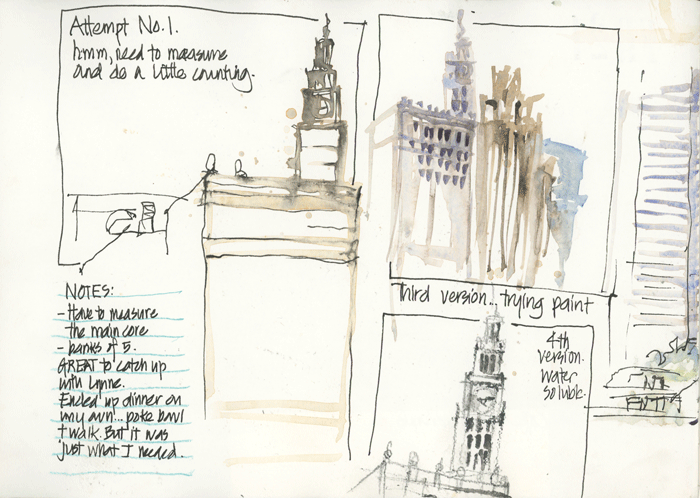
It took me a week or so of experimenting with different techniques before I could construct their volumes in a loose way which I was happy with. Here are a few tests I did after the above sketch of Wrigley Tower.

On my last day I did another version which was looser.
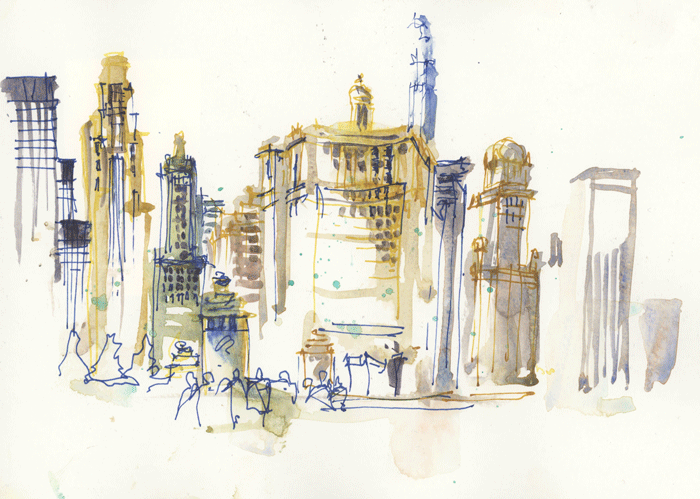
And in my final skyscraper sketch in Chicago, I achieved what I was after.
BTW more about sketching skyscrapers in this report of my Chicago USK Symposium workshop
So do you use this approach? How often? For what subjects?





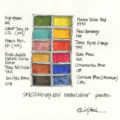

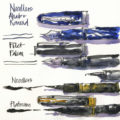
1 Comment
Beautiful painting! I like it.
NEWSLETTER
Subscribe for first notification of workshop + online classes and more.